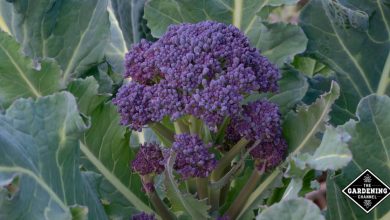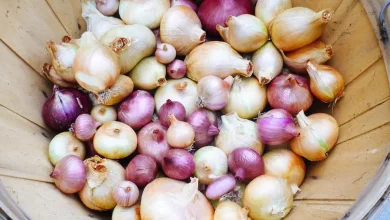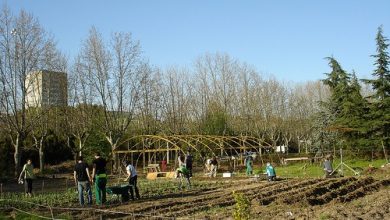The Ultimate Guide to Growing Melons Successfully
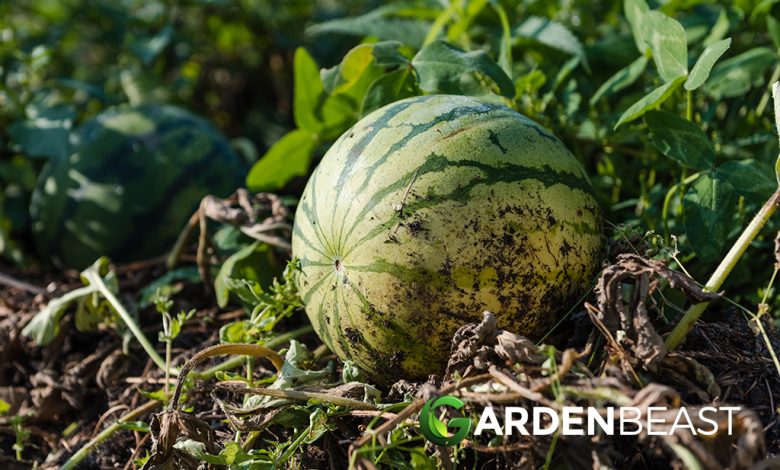
Did you know that Yubari King melons are the most expensive melons in the world? They are known for a particular sweet taste and grow only in a small region of Japan.
Its price, more than €15,000!
I personally love melons. And without a doubt there is a huge difference between eating a melon from the supermarket and eating a melon from your own garden and organic.
The taste is usually spectacular.
Plant Melons Step by Step:
- When? Between April and May.
- Where? Area with a lot of sun. It requires a lot of sunlight.
- Harvest time? About 2-3 months.

- How do we prepare the land? Removed with motorized hoe. Let it drain easily. A pH between 6-7.
- How do we pay? Ideal compost decomposed organic matter. Worm humus and manure.
- How do we water? With drip.
- How often do we water? At first every 2-3 days, about 40 minutes. When the plant gains strength, we water it daily for about 30 minutes. Then, when the fruit ripens every 4 days about 30 minutes.
- How do we sow? The seed buried 2cm. We leave a space between seeds of 30cm. In case it is a plant, we leave a space between each plant of about 50cm.
- How do we harvest? We can hit them with our finger, giving it a dry blow. If the melon sounds hollow, it is already ripe.
- Good associations? corn, Swiss chard, onion, oregano, sunflowers, lentils, lettuce, cabbage, andpeanuts.
- Bad associations? The cucumbers.
- Plagues and diseases? Aphids, red spiders, whiteflies, thrips, powdery mildew and mildew.
T he high nutritional value of the melon makes it a fruit that should not be missing from the usual diet. It is a kind of fruit vegetable.
It is rich in vitamins A, B, C and E, and contains various minerals such as magnesium, phosphorus, calcium and iron, among others. In addition, its fat content is practically zero.

Currently, we can find all kinds of melons on the market: Piel de Sapo, Ogen, Galia, Cantaloupe, Honeydew, etc.
Each one with its different peculiarities, but all with two factors in common: its sweetness and freshness, which make it the ideal fruit to consume at any time of the day.
Planting melons is simple as long as we follow certain instructions, and it requires less care than people usually believe.
In this article we give you the best tips so you can grow melons in your own garden.
Main characteristics of the melon
The melon, or Cucumis melo, is a herbaceous plant and fruiting vegetable (like the watermelon).It grows in summer and has a high water content.
Its plant has palmate leaves, that is, its appearance is similar to that of a hand, while the berry or fruit has a shape that ranges from spherical to ellipsoidal.
In some cases, as in the so-called banana melons, there are ripples that make them look like a «pumpkin».
Its size depends on the variety and the growing conditions.
Thus, we can find small melons that weigh around 400 g and other very large ones that can weigh 20 kg or more, although in the most common varieties, the average weight fluctuates between 500 g and 5 kg.
Its origin is shrouded in mystery: some experts consider that it originates from South Asia, while others attribute its origin to the African continent; in fact, there are representations of this fruit in Egyptian tombs from 4,400 years ago.
It was the Romans, through the port of Cartago Nova, who introduced it to the Iberian Peninsula, being precisely in the Campo de Cartagena where the largest melon plantations in the entire Region of Murcia are found.
There are different varieties of melon, depending on its characteristics.
Did you know…The flesh of the Chinese melon is usually green, but there is also an orange variety, known as «temptation melon».
Its color can be yellow, green or combined, and its shape can be round or elongated. Likewise, its pulp can be of different colors.
Each variety, therefore, differs in appearance, properties and cultivation method. The most cultivated types are the yellow melon, cantaloupe, tendral, toad skin, Rochet, honeydew and galia, but there is a great diversity of melons throughout the world.
yellow melon
Within this group there are two types: Canary Yellow (more oval) and Golden Yellow (more elongated).
The skin of the fruit is smooth and yellow, without writing. Its pulp is white, crisp and sweet. Its cultivation cycle usually lasts from 90 to 115 days.
spanish green melon
Within this group there are three types:
- Toad skin. They are elongated, with an average weight of between 1.5 and 2.5 kg. Its pulp is pale white, compact, crisp and very sweet. The bark is thin, green, with dark spots. Its cultivation cycle is 100 days.
- Rochet. They are elongated, with an average weight of between 1.5 and 2 kg. His skin is green and smooth, with some writing, especially on the extremities. Its pulp is pale white, compact, too sweet. Its cultivation cycle is 100 days.
- Tendral. It is a variety native to southeastern Spain, also known as winter melon. They are quite heavy melons up to 3 kg. They have a rough, dark green, very thick and resistant bark. It is uniform, rounded, but without writing. The pulp is white, firm, sweet and odourless, and is reminiscent of the taste of cucumber when it is not yet ripe. Its cultivation cycle is 120 days.
Did you know…Muslims have a proverb to describe its many benefits: he who fills his stomach with melons will be filled with light.
honeydew melon
This variety has a grainy, yellowish-green skin and orange flesh.
It is adapted to dry and hot climates. Its pulp is very juicy, sweet and crunchy. They usually weigh between 2 and 3 kilos.
They are grown in Murcia, Cartagena, Valencia and Cuenca.
Out of season, they are imported from December to March from Costa Rica and Brazil.
Galia melon
It is a hybrid from Israel.
Its shape is spherical, green in color that turns to intense yellow when ripe. It presents a dense writing.
Its pulp is white, slightly greenish and not very consistent. It weighs between 800 g and 1.5 kg. Its cultivation cycle is between 80 and 100 days.
Cantaloup or cantaloupe melon
 They are spherical and slightly flattened fruits.
They are spherical and slightly flattened fruits.
Its skin is yellow, thin and has longitudinal stripes that go from the base of the fruit to the peduncle.
They weigh between 700 g and 1.5 kg. The color of its pulp is orange, very similar to pumpkin and it has a very characteristic aroma.
There are smooth-skinned varieties (such as the Charentais) and notched -skinned varieties (Italian Supermarket).
Its cultivation cycle is between 85 and 95 days. The main producing country is France, although in Spain it is also grown in Almeria and Murcia.
To know more, read: Varieties of melons.
What do we need to plant melon?
To plant melon we must pay attention to the following:
nutrients
Melons are not very demanding in terms of nutrients, although it is recommended to put some homemade organic matter such as mature and well-decomposed compost in each hole where the seeds are sown or the transplant is made.
Trick:Apply compost, worm humus or organic matter such as manure in large quantities one month before cultivation.
Sprinkling a few coffee beans around the root system can be an effective way to stimulate plant growth.
the substrate
- The melon plant is not very demanding in terms of the substrate, but it gives better results in soils rich in organic matter, deep, soft, well drained and with good aeration.
- We will seek to plant in sunny areas and on soft and well-fertilized land.
- If sowing is in a nursery, it should be in pots or large containers to facilitate transplanting without damaging the roots.
- For planting on land, the soil is mixed with highly decomposed compost.
 Spread it evenly over the planting bed to create a rich feeding area for the melon.
Spread it evenly over the planting bed to create a rich feeding area for the melon.
- For this, the most suitable is 15 to 20 cm of well-tilled soil.
- Remember that melons are demanding in terms of drainage, as waterlogging can cause root suffocation and fruit rot.
- If your garden tends to flood, you need to do everything you can to fix it.
- You can create slopes so that the water runs off to the side and install gutters to make it easier to collect the water.
- Another effective technique is to create mounds of soil and plant melons on top of them, so less water will accumulate at the foot of your plants.
- At the time of planting melons, add a good amount of mulch, compost, peat or manure to fluff up the soil and aerate it.
If you also add river sand and mix it well with the soil, the result will be favorable.
Important points:
- In extreme cases, it is best to install a network of drainage pipes.
- Keep in mind that if irrigation is excessive or very deficient, up to 50% of production can be lost.
- The melon is very sensitive to deficiencies, both microelements and macroelements.
- It is recommended that you make sure to measure the pH of the soil and adjust the need if necessary.
- The values ofOptimum pH ranges between 6 and 7.
Did you know…In Spain there are more than 42,000 hectares devoted to melon cultivation!
Before growing your melons
The seeds
 The seed for melon planting is extracted from the ripe fruits.
The seed for melon planting is extracted from the ripe fruits.
You can extract them from the pulp of a melon and soak them in cold water for two days.
Later, dry them with a paper towel and keep them inside a glass jar in a cool environment until the moment you decide to plant your melons.
Just remember that it is recommended that no more than a year pass.
The fertilizer
Apply compost, worm humus or manure in large quantities a month before cultivation.
Where do we sow? light and temperature
Preferably outdoors. With direct sun.
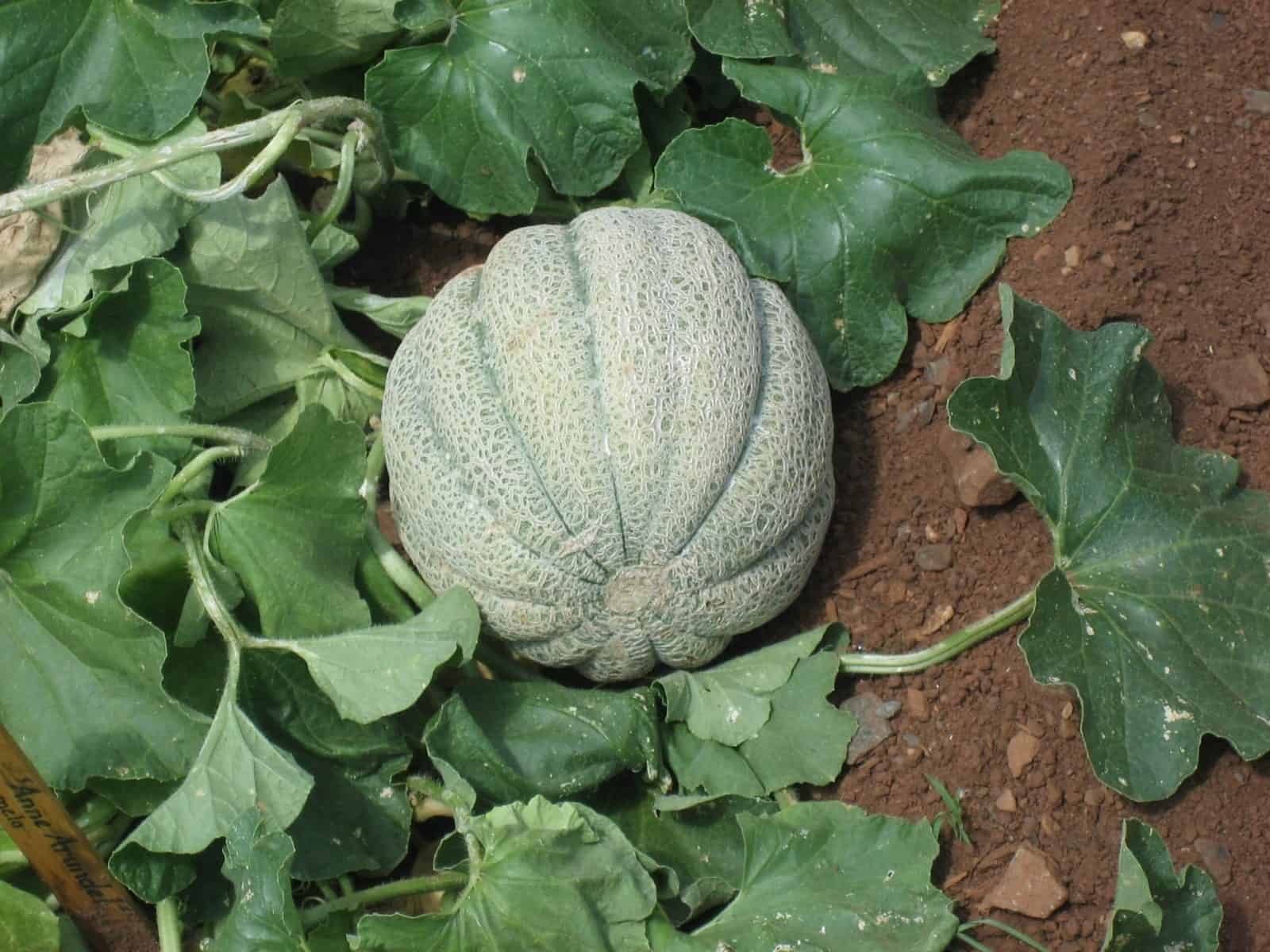 Melons, for their correct development, require a minimum of 4 months in full sun for the fruits to fully develop.
Melons, for their correct development, require a minimum of 4 months in full sun for the fruits to fully develop.
The soil temperature must be above 21°C before you start planting or the seeds will not germinate.
It is convenient to plant melons 10 days before the last frost.
If sowing is in a seedbed, it should be in large pots to facilitate transplanting without damaging the roots.
If temperatures in your region can reach temperatures below 10ºC during the time you want to plant them, it is best not to do so.
How do we prepare the land?
The soil must have good filtering. Also, it should be loose enough, without being compressed.

If you plant in a pot, a good recommendation is to mix two parts of soil and one part of sand.
The soil offers your plant the nutrients it needs, while the sand controls humidity.
Till the area where you are going to plant the melons. You will need a 1.2 x 1.8 m area for this, so make sure you clear enough space.
Since vines need some space to spread out, it’s best to create trellises to support your plants.
Next, you need to form mounds for planting.
Melons grow best on mounds that are raised slightly above the ground. Each mound must have 6 cms. Tall. The ideal is that between each mound you leave at least 30 cm. from separation.
Make multiple rows. Between each row there should be at least 1 meter distance.
melon planting
On what dates?
Between April and May.
The process for planting melons
Sow 4 or 5 seeds in each mound of soil that you have made, at a depth of 2 cm.
Next, protect your seeds with mulch. Place some mature, well-decomposed compost in each mound.
Irrigation in melon cultivation
You can water them every 2 or 3 days during the summer.
Irrigation must be adapted according to the development of the plant:
- Before the first shoots constant humidity should be maintained.
- The irrigations will increase with the appearance of the first fruits and will be more frequent until the fruit has matured.
- After maturation, watering frequency should be reduced to allow them to develop their flavor and sweetness.
A drip irrigation system is recommended.
The optimum relative humidity ranges between 65 and 75% during formation, between 60 and 70% during flowering and between 55 and 65% during fruit ripening.
Tips on watering
- They require a minimum of 2.5 to 5 cm of water per week.
- You can water them every 2 or 3 days during the summer, but be sure to water them more frequently if the weather is dry and very hot.
- Some varieties such as the cantaloupe are more vulnerable to very dry climates.
- The melon plant needs a lot of water in the growth period and during the ripening of the fruits to obtain good yields and quality.
- Therefore, irrigation must be adapted according to the development of the plant: before the first shoots, constant humidity must be maintained.
- The irrigations will increase with the appearance of the first fruits and will be more constant until the fruit has matured.
- However, you will want to reduce the frequency of watering from then on, to allow them to develop their flavor and sweetness.
- Don’t overwater. If puddles do occur, add some mulch around the plants to help absorb excess water.
- The ideal for this type of crop is drip irrigation, so we ensure that it does not lack water without flooding the plant.
- Water around the base of the vines and try not to wet the fruit as it emerges.
Did you know…It is so popular that it not only appears in Egyptian hieroglyphs, but on the Internet there are more than 2,130,000 entries with melon recipes in Spanish.
The first shoots in the melon trees
On average, the seeds take between 7 and 10 days to germinate.
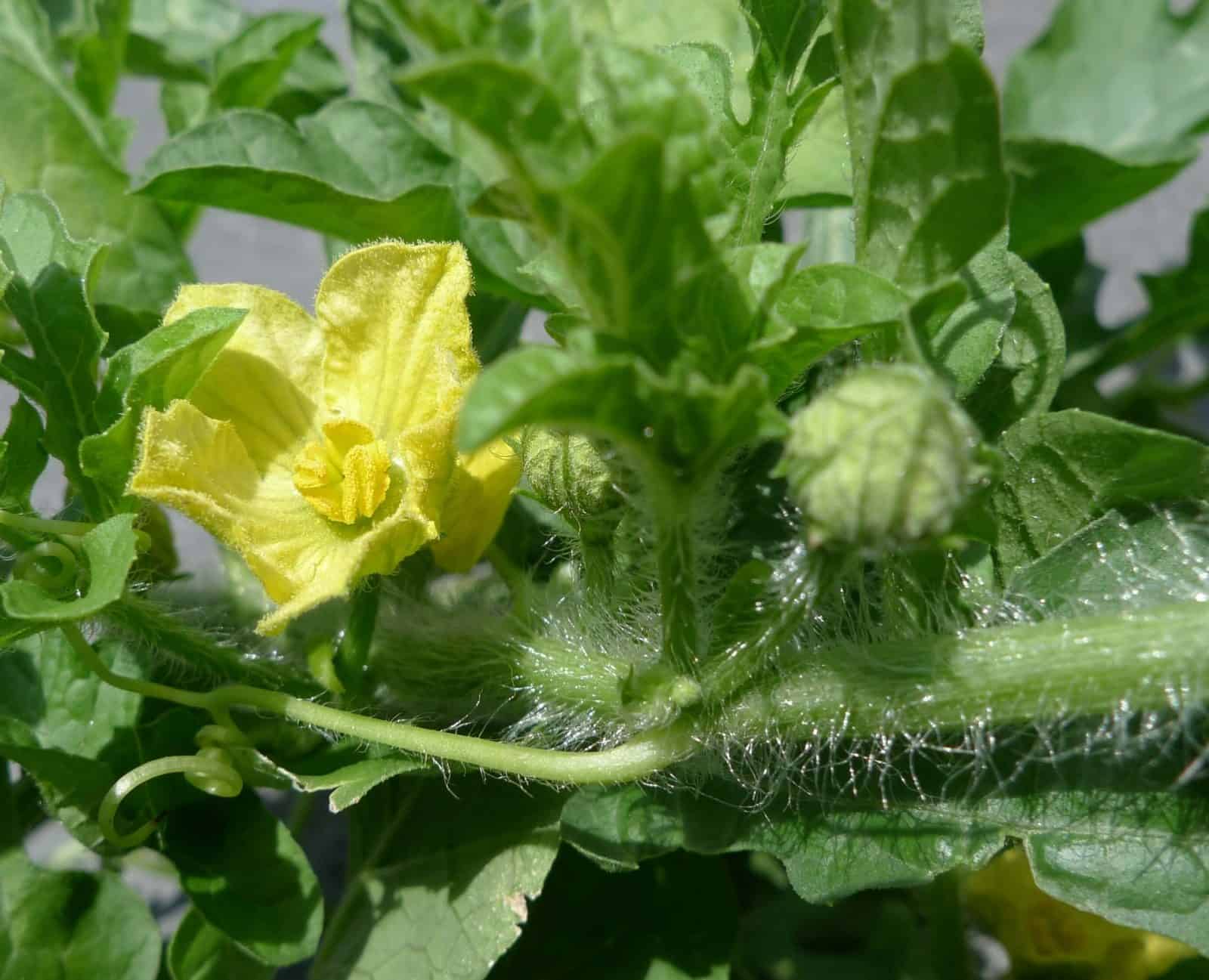
When the first plants have sprouted, we will uproot the weakest and leave only the healthiest and most vigorous plant.
The melon transplant
The transplant from the seedbed to the final site will be done when the plant reaches about 15 cms. Tall.
Put some mature, well-decomposed compost in each place where you transplant the plant.
A good idea is to cover the rows with netting to keep them warm and protect them from insects.
How do we guide the plant?
Carefully remove weeds from the area before the vines begin to develop and climb.
But be very careful not to uproot the melon plant, since in its early stages it is similar to some herbs that you must remove, such as clovers.
To differentiate your melon shoots from weeds, you can mark your shoots with plant tags, or wait until they are differentiated from the clover to start weeding.
For the guide of the vines,plant sticks 4 to 6 feet tall in each mound.
If the weather is humid, creating trellises is a good way to keep melons protected from harm.
Moving melons off ground level is recommended to protect them while the vine matures.
Harvest and collection of melon
Melons ripen in late summer or early fall.
You’ll know they’re ready for harvest when the melon smell is noticeable through the rind.
Another way to notice the time when the harvest should be done is when the leaves attached to the fruit begin to dry.
Some varieties show cracks around the stem when they are ready for harvest.
Trick:You can also hit them with your finger, giving it a sharp blow. If the melon sounds hollow, it is already ripe.
Likewise, it is advisable to leave a single fruit on each vine, every two weeks. Thus, the vine can concentrate on that fruit, making it sweeter.
To learn more, read our guide: Picking melons.
postharvest
Once you’ve picked them, the melons will get softer. If you don’t eat them soon after harvesting, you can store them in the refrigerator for up to 15 days.
favorable associations
It associates very well with corn and chard.
In addition, you can plant them with onions, sunflowers, lettuce, cabbage and peanuts.
bad associations
It doesn’t go well with cucumber, as they end up competing for space.
Common Pests and Diseases of Melons
- The most common pests that can appear during melon cultivation are:
- Aphid: to prevent it can be associated with basil. If eradication is required, potassium soap and vegetable insecticides can be used.
- Red spider: It develops on the underside of the leaves causing discoloration or yellowish spots that can be seen on the upper side as the first symptoms. To combat it, it is recommended to irrigate the melon at night by sprinkling to maintain humidity and use natural insecticides.
- White fly: To prevent it, the underside of the leaves can be sprayed with 1% potassium soap with rain or distilled water.
- Thrips: These are flying insects that leave white spots with black dots on the leaves. To combat it, a combined application of neem extract and potassium soap is recommended.
- Ribbed cochineal: The ribbed cochineal bases its diet on the consumption of sap that it sucks from different areas of the plants.
As for the most common diseases, we find:
- Powdery mildew: To prevent it, it is recommended to install a drip irrigation system and apply horsetail or buttermilk. If the plant is infected,the leavescut
- mildew: It is prevented by improving the ventilation of the plant.
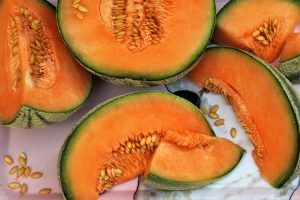 The cultivation of fruits is one of the most profitable that exists due to the benefits they provide in terms of health and one of those that we can have at home is the melon.
The cultivation of fruits is one of the most profitable that exists due to the benefits they provide in terms of health and one of those that we can have at home is the melon.
However, we must be on the lookout for pests and diseases that could prevent us from enjoying a healthy and delicious harvest .
Given this reality, the best thing is knowledge and hence it is such a good plan that you take a few minutes to read the information that we bring you below.
Red spider
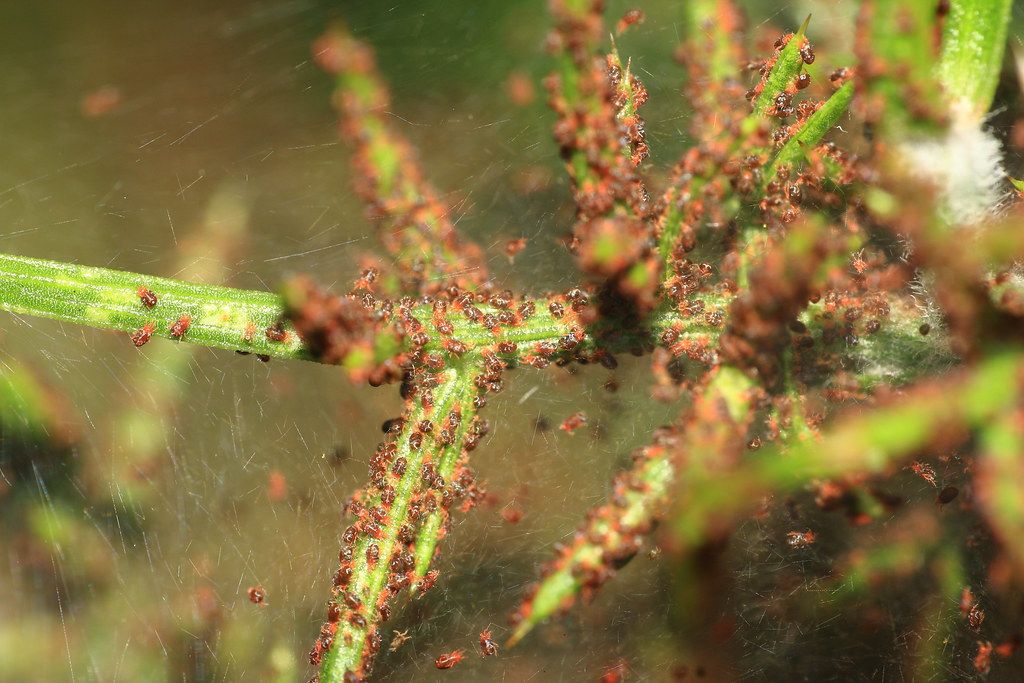
Red spiders are pests that usually manifest themselves in many types of crops. Although the main one par excellence is th

